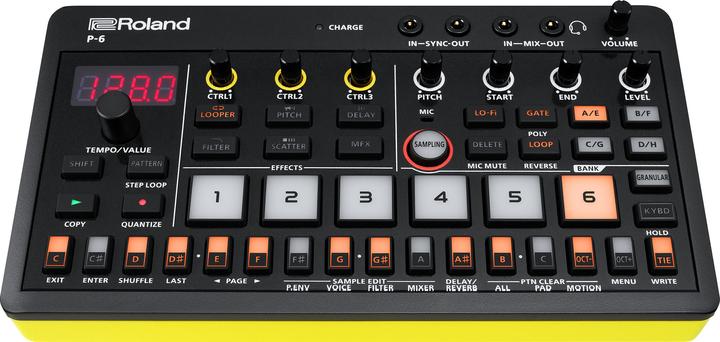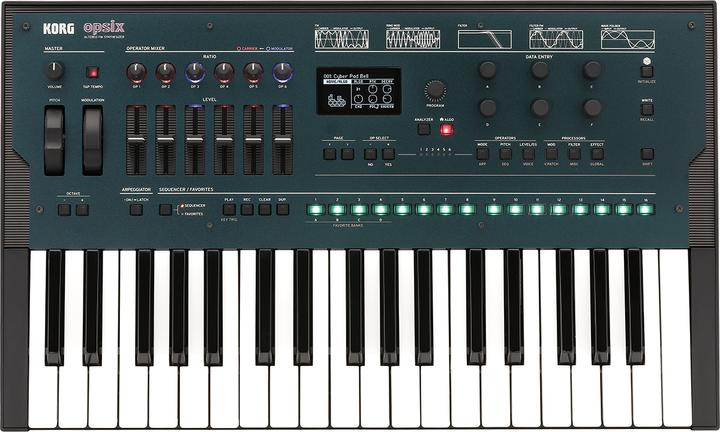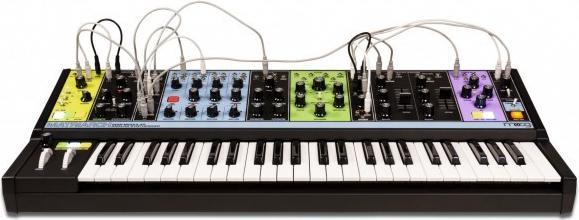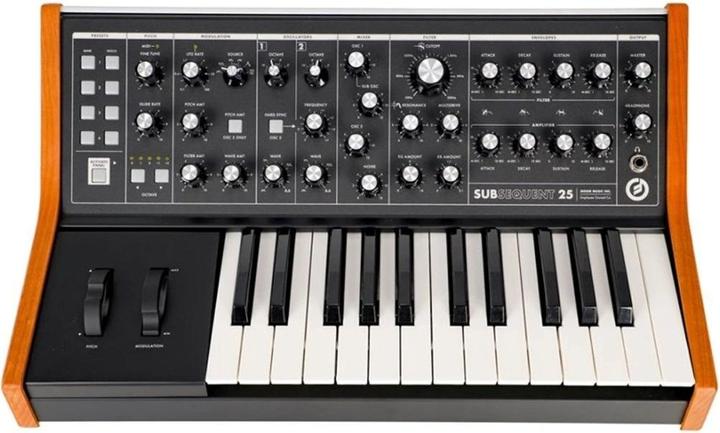
Best selling Synthesisers from Sonstige Studios
On this page you'll find a ranking of the best Sonstige Studios products in this category. To give you a quick overview, we've already ranked the most important information about the products for you.
1. Sonstige Studios Roland P-6 Creative Sampler
The P-6 Creative Sampler combines Roland's renowned sampling technology in a pocket-sized device with sophisticated granular sound design options and a powerful sequencer. It features a built-in microphone, intuitive controls, a USB-C port, and a versatile array of practical MFX. The P-6 offers exceptional sampling and performance capabilities, no matter where you are.

2. Sonstige Studios Korg opsix
The Korg opsix is an innovative synthesizer that redefines the boundaries of classic FM synthesis. With its six operators, it offers a wide range of sonic possibilities, encompassing both nostalgic sounds from the 80s and modern, powerful tones for contemporary music styles. The opsix is not only a tool for creating traditional FM sounds but also a creative instrument for cinematic effects and complex soundscapes. The intuitive user interface, featuring a newly developed operator mixer, allows for quick control over the volume and pitch of individual signals. The sharp OLED display and multicolored LEDs provide clear visualization of settings and parameters, making operation easier and enhancing the creative process. With 21 different waveforms and five operator modes, the opsix significantly expands the possibilities of FM synthesis and opens up new sound dimensions.
- Six operators for expanded FM synthesis
- 21 handpicked waveforms for diverse sounds
- Five different operator modes: FM, Ring Modulation, Filter, Filter FM, and Wave Folder
- Intuitive interface with operator mixer and OLED display
- Dynamic display of controls through multicolored LEDs.

3. Sonstige Studios Moog Matriarch
Moog's new analog synthesizer is here. The Moog Matriarch is a four-voice paraphonic synthesizer equipped with patch connections, featuring a sequencer, arpeggiator, ladder filter, and analog delay.
Matriarch allows for the creation of rich and versatile sounds and sequences on the fly. The instrument's extensive 90 patch connection capability adds vibrancy to its use. You can thus unlock the joy of modular synthesis to already built-in sounds. All of this is based on classic Moog vintage circuitry.

4. Sonstige Studios Subsequent 25
Monophonic Analog Synthesizer
The Moog Subsequent 25 is a monophonic or duophonic playable analog keyboard synthesizer with 25 keys, positioned sonically closer to the Subsequent 37 while combining the clear control panel of the Sub Phatty.
A Classic Moog
Two analog oscillators with blendable waveforms and the characteristic and popular “Moog Growl,” including hard sync, a sub-oscillator, and a noise generator, form the core of the Moog Subsequent 25. The first sound-shaping instance in this synthesizer is the mixer, which adds harmonic distortion starting from the midpoint, thus modifying the waveforms accordingly. The equally analog low-pass filter (transistor ladder) can be switched between 6, 12, 18, and 24 dB and features its own distortion parameter, allowing for a wide range of sound alteration from subtle to aggressive. Two snappy ADSR envelopes of the Subsequent 25 are permanently assigned to the filter and VCA.
Play Me!
The almost self-explanatory control concept of the Moog Subsequent 25, combined with the velocity-sensitive and aftertouch-capable keyboard, creates a successful unit for playing captivating basslines and lead melodies. 16 memory slots are distributed across four banks of four presets each. In panel mode, all current settings are queried, making the Subsequent behave like a truly analog synthesizer without memory slots: you get what you see.
Shift Mode in the Moog Subsequent 25
For the Subsequent 25, it is indeed advisable to take a look at the user manual. Here, all global settings and especially all shift functions are described in detail, which significantly enhance the instrument's functionality. Envelope triggering, settings for the LFO such as range, waveform modulation target, and tracking, monophonic or duophonic playing, as well as the number of filter poles (1-4 at 6 dB each) can be switched here, among other options.
